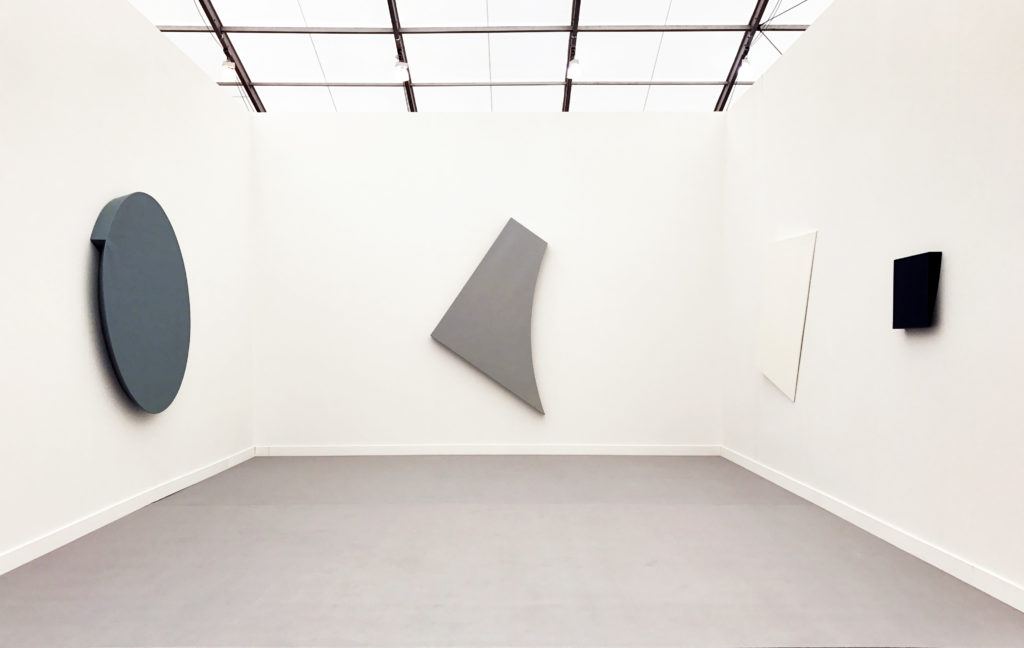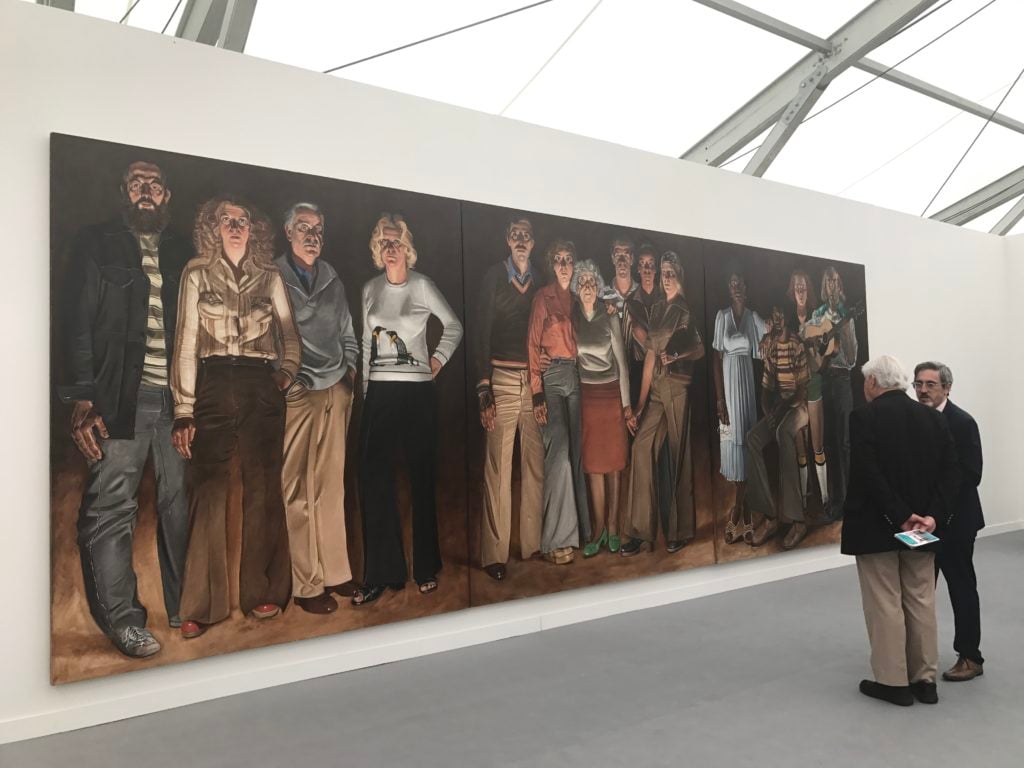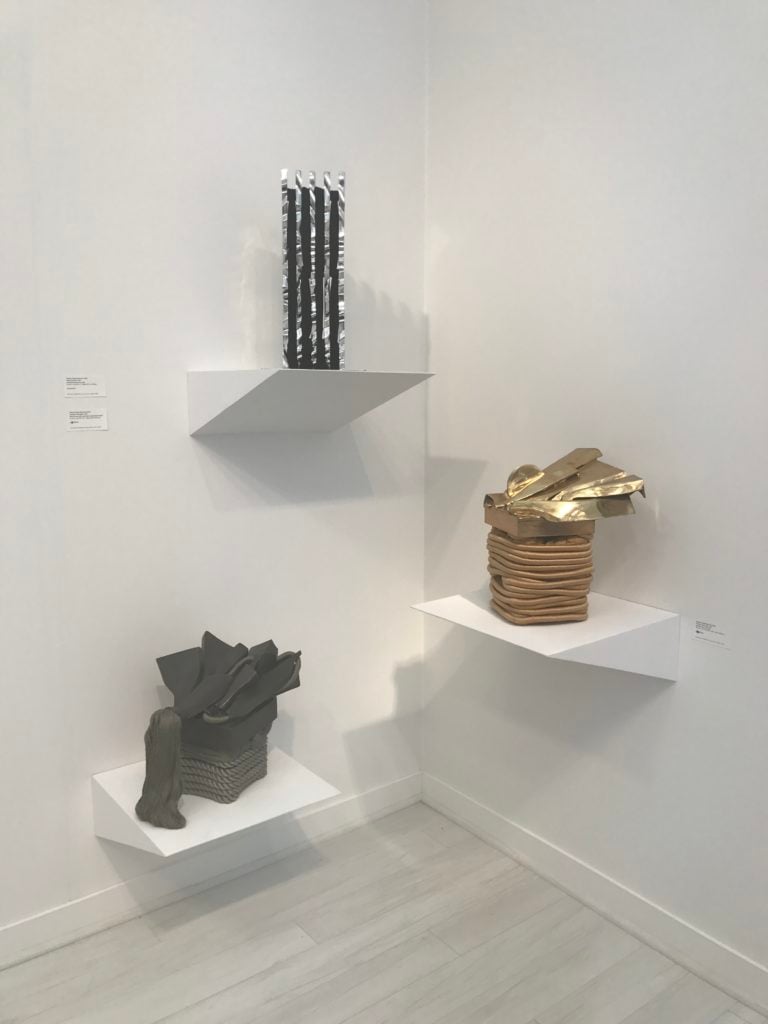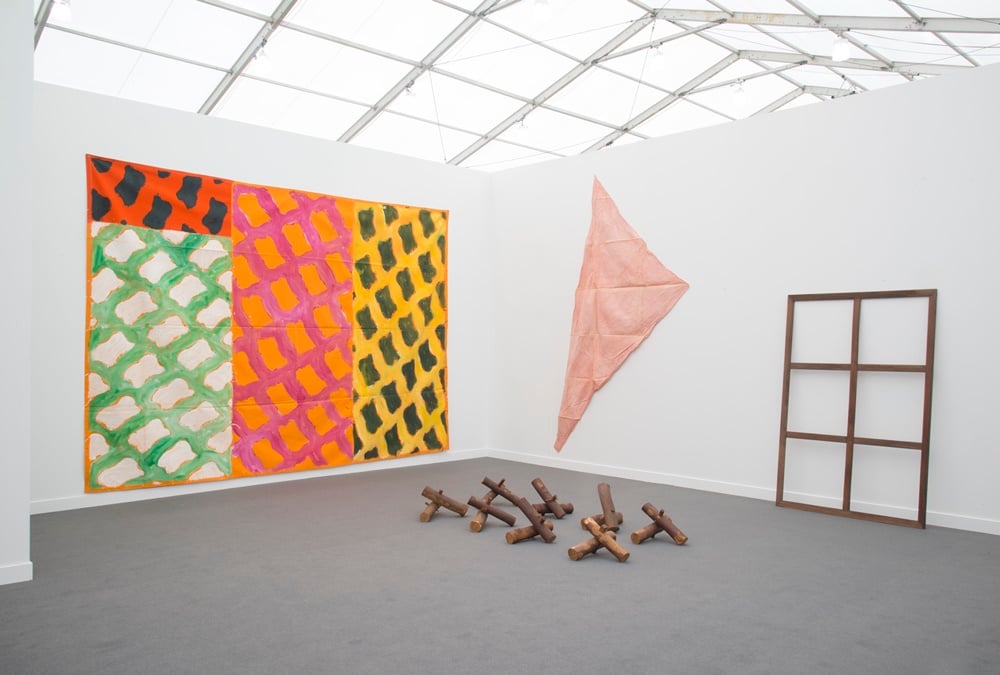Art Fairs
In Uncertain Times, Galleries at Frieze New York Dig for Market Gold in Recent Art History
Amid an unsteady market, dealers and collectors turn to under-recognized names from the 1960s and '70s.

Amid an unsteady market, dealers and collectors turn to under-recognized names from the 1960s and '70s.

by
Julia Halperin

Frieze New York was once considered a destination for works of art so new that the paint on them might still be dripping. But the fair—and the market—has changed. Frieze’s sixth edition, which opened to VIPs on Thursday and opens to the public today, is packed with work from the 1960s, ‘70s, and ‘80s. Rediscovery is the name of the game: Many of these works are by artists in their 80s and 90s who have yet to receive a monographic museum show in the US.
As the dealer Franklin Parrasch puts it, “The energy of collecting is in revision.” When the market is jittery—and the political climate is turbulent—dealers and collectors would rather plumb history to find an overlooked artist with a solid pedigree than take a gamble on a 22-year-old MFA student. “Insecurity reverts eyes to reflect upon history,” Parrasch says.
During the VIP preview, the Los Angeles-based gallery Parrasch Heijnen sold two of the four works on view at their solo booth dedicated to Tony DeLap, a pioneer of West Coast Minimalism who turns 90 this year ($38,000–$80,000).
Back in the 1960s, DeLap was well on his way to art stardom: His work was included in the legendary “Primary Structures” exhibition at the Jewish Museum and the “Responsive Eye” show at the Museum of Modern Art. (In fact, the now-better-known Southern California Minimalist John McCracken was DeLap’s teaching assistant at U.C. Irvine.) But after DeLap’s gallery closed and tastes changed in the 1980s, he fell from favor. “Dealers die, people forget—it could have happened to a lot of artists we consider household names today, if the circumstances were different,” Parrasch says.
What’s Old Is New Again
Indeed, DeLap isn’t the only artist old enough to remember the Truman administration who is now getting renewed exposure at Frieze. At Venus Gallery, assemblages by the artist William T. Wiley—who taught Bruce Nauman at U.C. Davis and was included in Harald Szeeman’s influential “When Attitudes Become Form” exhibition in 1969—hangs alongside work by better-known contemporaries like Robert Rauschenberg and Jack Goldstein.

Alfred Leslie’s Americans, Youngstown, Ohio (1977-78) at Bruce Silverstein Gallery at Frieze New York. Photo by Julia Halperin.
One of the largest works at the fair is Alfred Leslie’s 24-foot-wide painting of residents from Youngstown, Ohio, from 1977–78, priced at $1.4 million at Bruce Silverstein. The artist, who began as an Abstract Expressionist, turned to figuration in the early 1960s before losing much of his work in a studio fire in 1966. “He was rejected by the Ab Ex world, rejected by the photorealists, and he wasn’t playing the game,” Silverstein says. That seems to be changing now: A portrait by Leslie (who also co-directed the cult film “Pull My Daisy”) was recently included in the “Human Interest” exhibition at the Whitney Museum, and Silverstein says other institutions are circling.
Younger galleries at the fair are also looking to capitalize on overlooked older work. In the Frame section, which hosts galleries less than eight years old, Walden of Buenos Aires is showing drawings from the 1970s by the late Mexican-born, Amsterdam-based artist Ulises Carrión, who was in touch with the Fluxus community in Europe and Conceptual artists in Latin America ($15,000–$30,000).
In the Focus section, dedicated to galleries founded after 2004, Simone Subal is showing paintings and drawings by Kiki Kogelnik, a Vienna-born, New York-based feminist Pop artist who was friends with Claes Oldenburg and Roy Lichtenstein ($15,000–$130,000). “They never took her work that seriously because she was a woman,” Subal says. The gallery sold several works during the VIP preview.
Notably, both Frieze stand prizes went to booths focused on art of the past: Subal’s stand and P.P.O.W.’s presentation of ’80s art. And the Brooklyn Museum acquired a painting from 1971 by Virginia Jaramillo during the VIP preview, thanks to the inaugural Frieze Brooklyn Museum Fund. Hales Gallery is presenting a solo booth of Jaramillo’s work, which is also included in the Brooklyn Museum’s “We Wanted a Revolution: Black Radical Women, 1965-85.”
Yet galleries remain more willing than some institutions to take a chance on a new discovery. “Museums have to weigh limited acquisition budgets and storage,” says Toby Kamps, the curator of Modern and contemporary art at the Menil Collection in Houston, who organized the fair’s Spotlight section of art from the 20th century. “Some museums are interested in alternative streams of Modernism, and others say, ‘We have to focus on existing through-lines in our collection.’”
How Did These Artists Get Overlooked?
Some work from the 1960s and ’70s was not widely seen in its own time because the artists “just weren’t interested in the idea of an audience,” Kamps says. Some artists had other occupations: Thomas Kovachevich, whose work is at Calicoon Fine Arts, is a retired physician, while Barbara Chase Riboud, whose bronze, steel, and fabric sculptures are at Michael Rosenfeld Gallery, is best known as a poet and novelist. (Two of her sculptures, priced around $150,000, sold during the VIP preview.)

Sculptures by Barbara Chase-Riboud at Michael Rosenfeld Gallery at Frieze New York. Photo by Julia Halperin.
Other artists were simply left behind due to changing tastes. The Supports/Surfaces movement—a group of French artists who sought to free painting from the confines of canvas in the late 1960s and early ’70s—has gained wider market and institutional recognition in recent years, but only after a long period of inertia.
“Dealers in France abandoned them in the ‘80s to show American artists,” says François Ceysson of Ceysson & Bénétière. (How times have changed—the gallery will now bring Supports/Surfaces to America through its first New York outpost, which opens this weekend.) At Frieze, the gallery sold four paintings by Claude Viallat (whose prices range from €10,000 to €500,000) to US collectors and a 1976 assemblage by Bernard Pagès to the collection of art storage developer Steven Guttman.

Ceysson & Bénétière’s Supports/Surfaces booth at Frieze New York. Photo courtesy of Ceysson & Bénétière, © Adam Reich.
Some explanations for why an artist has been overlooked are more personal. Masatoshi Masanobu, one of the founding members of the Japanese Gutai movement, has not shown in the US for more than 50 years because his children were not interested in giving him international exposure, according to Boris Vervoordt of Vervoordt Gallery. Masanobu was not included in the major exhibition of Gutai at the Guggenheim Museum in 2013, and it took 10 years for the gallery to secure the estate. His solo booth at Frieze includes paintings made between 1958–67 and priced between €55,000–€200,000; the gallery had sold four by Thursday afternoon.
Despite the buzz surrounding these recovered talents, experts say collectors should proceed with caution. Sometimes, artists have been forgotten for a reason.
“Opportunities are out there, but it’s not like you’re finding gold nuggets in the road—you have to dig for the bone and really look at why the market is the way it is,” says the art advisor Todd Levin, director of the Levin Art Group. Rediscoveries worth pursuing “are rare,” says the dealer Christopher Heijnen, “but something that I think will always happen.”